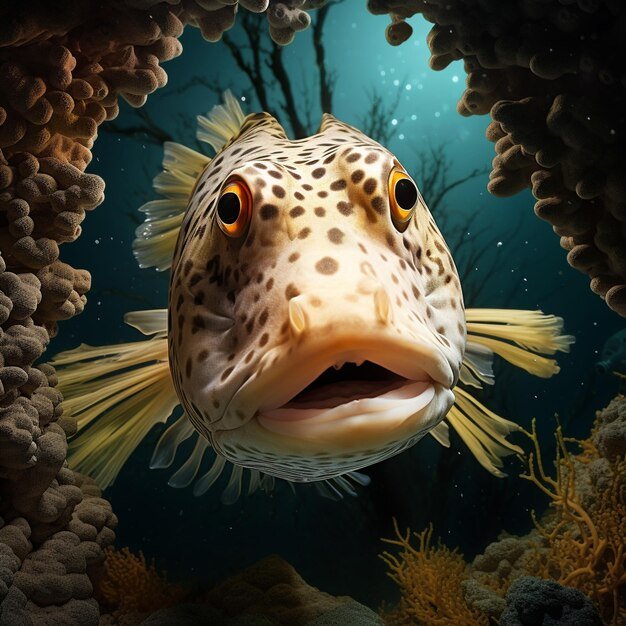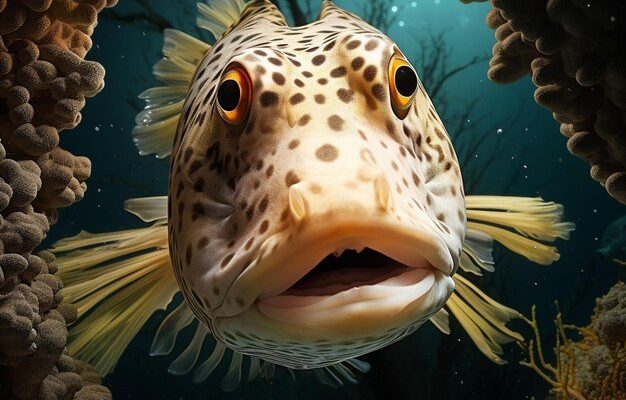
Grouper fish belong to the family Epinephelidae and come in various species, each with its unique personality, size, and habitat. The more common types include the black grouper, red grouper, and the giant grouper, which can weigh as much as 800 pounds! While they may seem intimidating, understanding their behavior can help us determine if we can interact with them safely. So, grab a cup of coffee as we explore whether humans and groupers can peacefully share the underwater world.
Understanding Grouper Behavior
Before you set foot in the water, it’s crucial to grasp how groupers behave. They tend to be curious and bold creatures, often found lurking around reefs or rocky areas. Instead of swimming away from divers, they might approach, intrigued by the bubbles and movements. This curiosity can be a double-edged sword. On one hand, it allows for thrilling encounters, but on the other hand, it can lead to risky situations if proper caution isn’t taken.
Groupers are generally not aggressive, but they are predators that can exhibit territorial behavior. For instance, during spawning season, they might become more protective of their area. If you’re lucky enough to see one up close, respect their boundaries and avoid sudden movements. Just like a shy dog, a grouper appreciates personal space! So, if you find yourself near one, observe from a distance to keep both parties comfortable.
How to Interact with a Grouper Safely
So, you’re feeling adventurous and want to interact with a grouper. That’s great! Here are some tips to ensure your experience is safe and enjoyable:
- Choose the right location: Look for spots known for grouper sightings. Many dive shops offer guided tours specifically targeting these fish. Local expertise can enhance your experience.
- Stay calm: When you see a grouper, it may be tempting to rush toward it. Instead, move slowly and quietly to avoid startling it. Think of it like a dance—you want to smoothly glide rather than stomp around.
- Use gear wisely: Wearing the right diving or snorkeling gear can help enhance your experience. A good wetsuit not only keeps you warm but also protects you from potential scrapes if you get close to rocks or corals.
Remember, it’s essential to avoid touching the grouper. While some may be curious about human interaction, not all groupers will appreciate being touched. Just like people, some fish enjoy their personal space!
Understanding the Risks of Grouper Interaction
Every interaction has its risks. Although groupers are generally not known to be aggressive, there are a few aspects to consider if you plan on swimming with them. First, always be aware of your surroundings. In murky waters, it’s easy to miss potential hazards. You might encounter other marine life that could pose a threat to you or the grouper.
Additionally, groupers have been known to bite defensively if they feel threatened. While rare, it’s essential to approach them respectfully. Think about it this way: would you want someone invading your space without permission? Respect goes a long way in ensuring a safe interaction.
Finally, even if an encounter goes smoothly, consider the environmental factors. Coral reefs are delicate ecosystems that can be harmed by careless behavior. Avoid touching or standing on coral, as this can damage these vital habitats. It’s all about being a responsible traveler in the underwater world.
Grouper Species and Their Temperament
It’s interesting to note that not all grouper species are created equal. Some species are more adaptable and curious, while others can be more skittish or territorial. Here are a few notable ones:
- Black Grouper: Known for their *dark color* and sizable presence, these fish are often seen near reefs. They’re usually friendly but can become territorial during spawning.
- Giant Grouper: As the name suggests, these are the giants of the grouper world. They tend to be curious and can be seen drifting lazily through the water.
- Red Grouper: These vibrant fish are a bit more cautious. While they might swim up to investigate, they typically prefer to keep their distance.
Understanding the different grouper species can help you adjust your expectations and interaction techniques. Some may be more open to human curiosity, while others may prefer to be left alone.
Preparing for an Encounter
If you’re ready to interact with groupers, preparation is key. Here’s a quick checklist to ensure you’re ready for your underwater adventure:
- Research: Before heading out, look up local grouper hotspots and dive shops. Some places also offer educational sessions on grouper behavior.
- Gear Up: Bring essential snorkeling or diving gear. Don’t forget a camera if you want to capture those magical moments—just make sure not to disturb the fish!
- Buddy Up: If possible, dive with a partner. This ensures safety and provides someone to share those incredible experiences with.
It’s like preparing for a big game—you wouldn’t just show up without practicing, right? Being informed and equipped will make the experience much more enjoyable.
The Importance of Conservation
As you prepare for your interaction with groupers, consider the bigger picture. Many grouper populations are declining due to overfishing and habitat loss. By choosing to observe rather than catch, you contribute to their conservation. Here’s how you can help:
- Educate Others: Spread the word about the importance of protecting marine life. Every conversation can raise awareness!
- Support Sustainable Practices: Choose eco-friendly tour operators that practice sustainable diving and fishing methods.
- Participate in Clean-Ups: Join local initiatives that focus on marine conservation. Every bit counts towards healthier oceans.
Embracing a conservation mindset not only helps groupers but also enriches your experience. It’s rewarding to know you’re making a difference while enjoying nature’s wonders.
Diving into the underwater world of groupers can be an exhilarating experience. By understanding their behavior, respecting their space, and preparing for encounters, you can safely interact with these fascinating fish. Remember, groupers are like the gentle giants of the sea—curious but deserving of respect.
So, whether you’re snorkeling or diving, always prioritize safety and conservation. By doing so, you help ensure that future generations can also enjoy the beauty of these incredible creatures and the ecosystems they inhabit. Happy diving!

